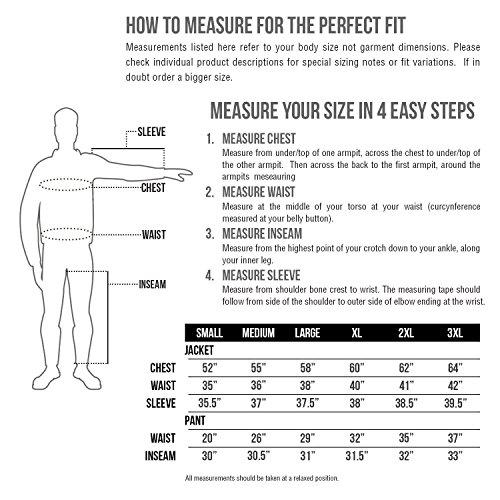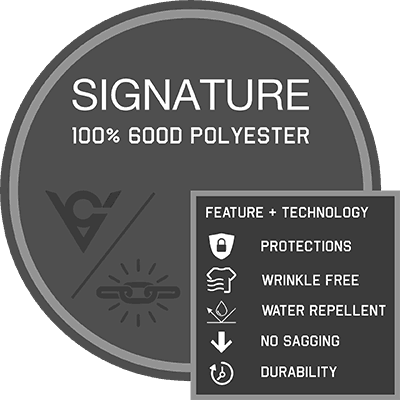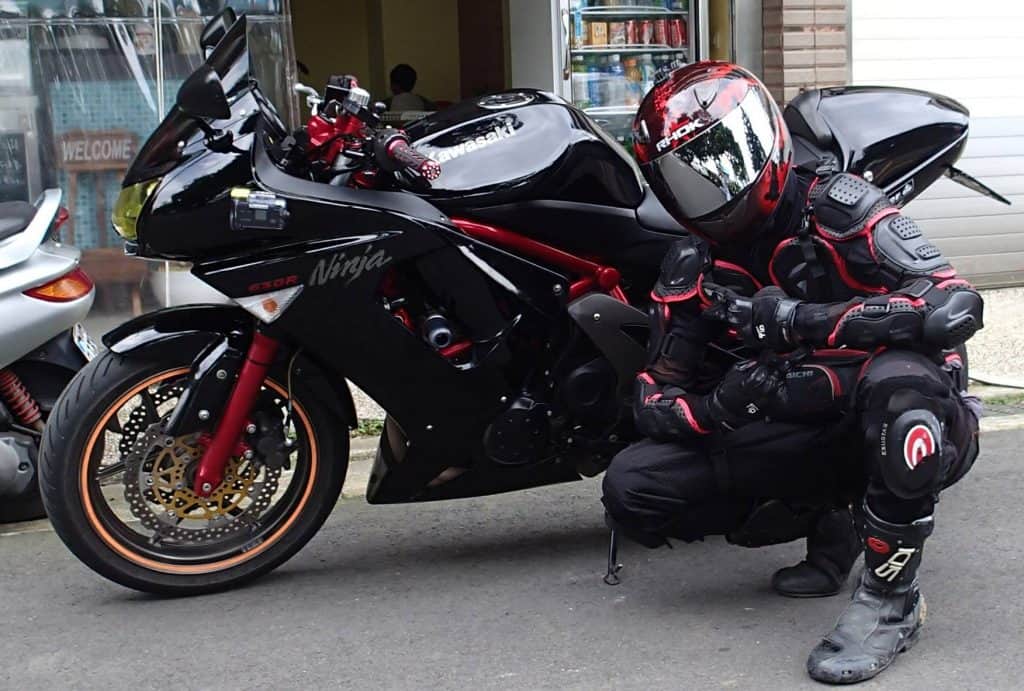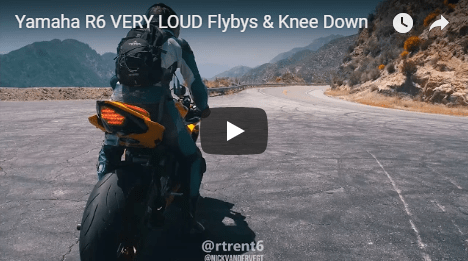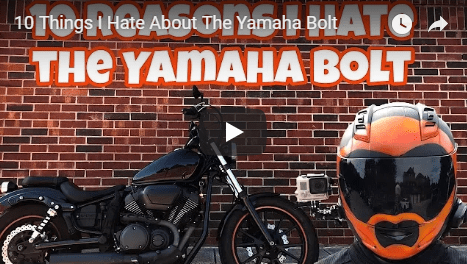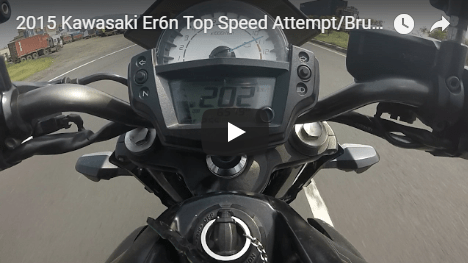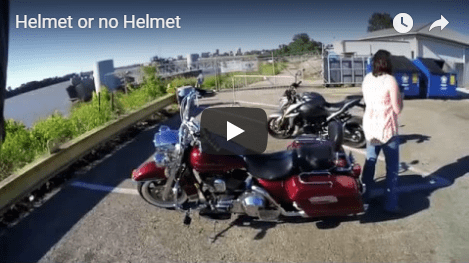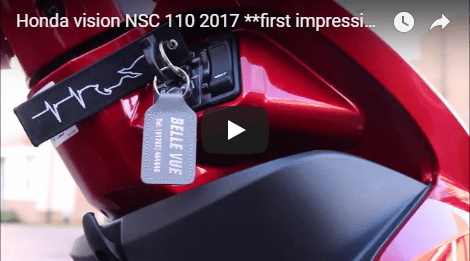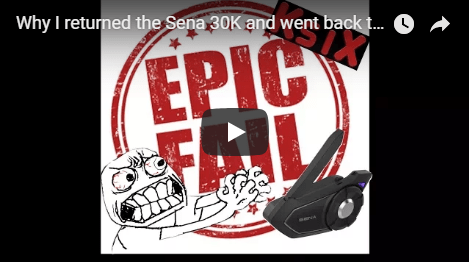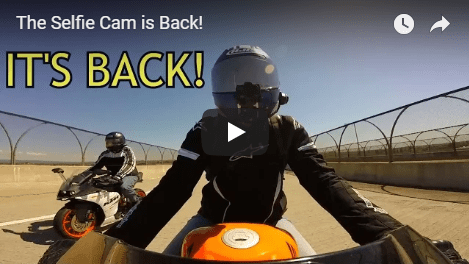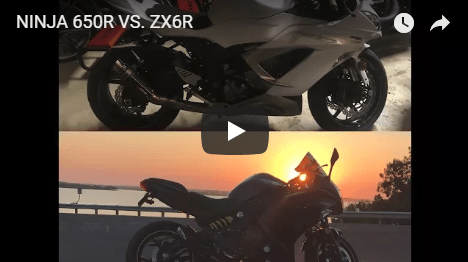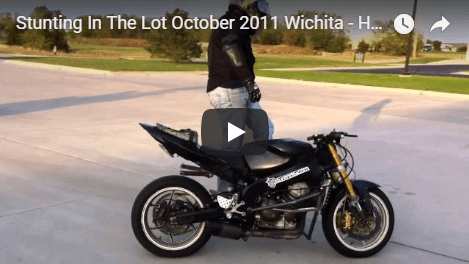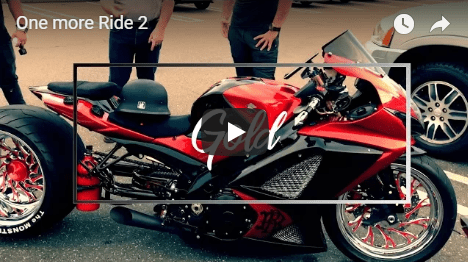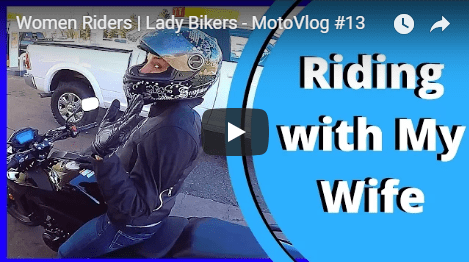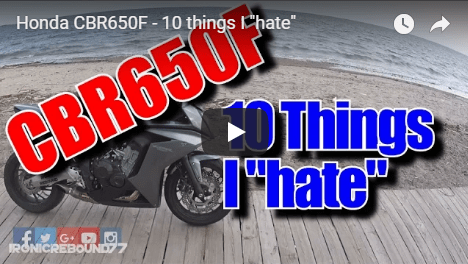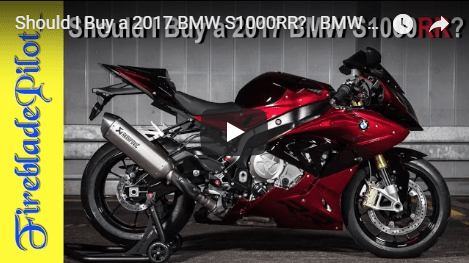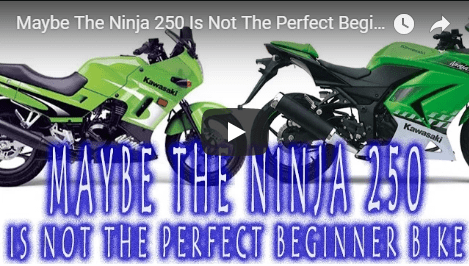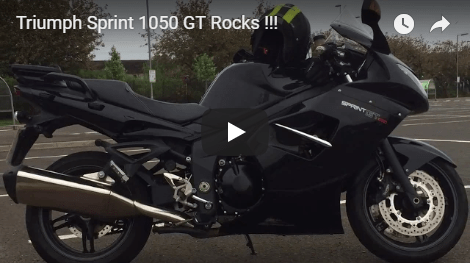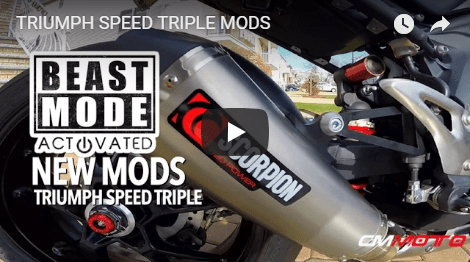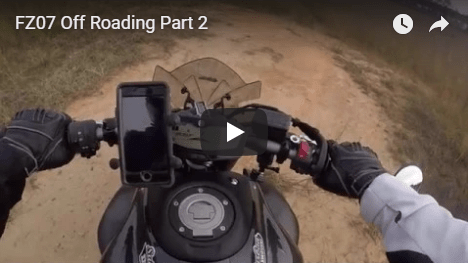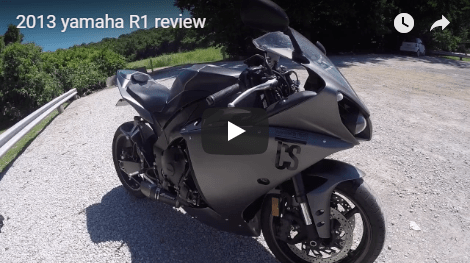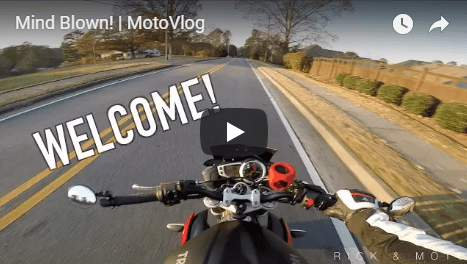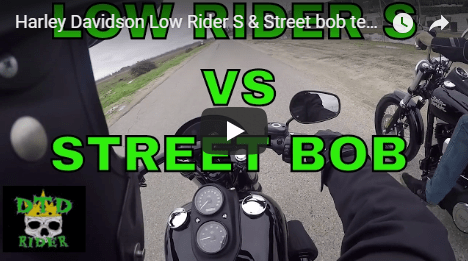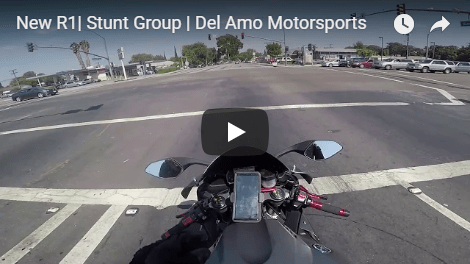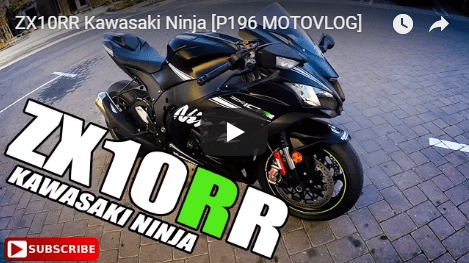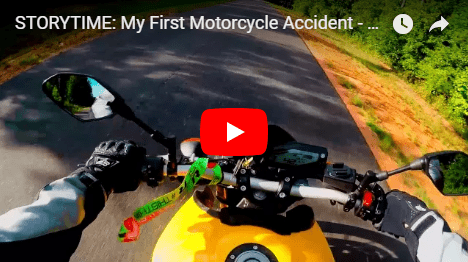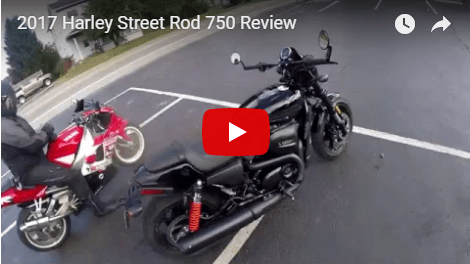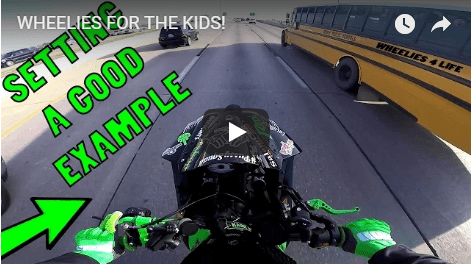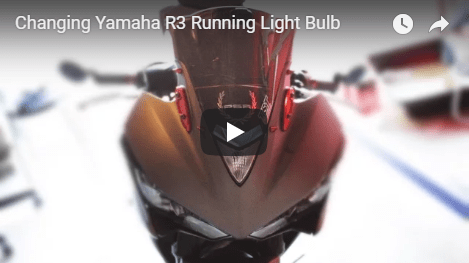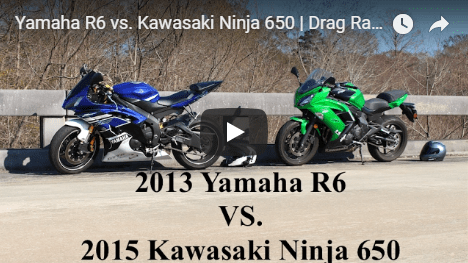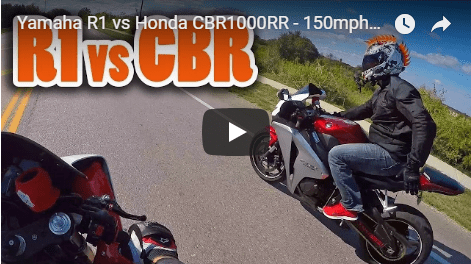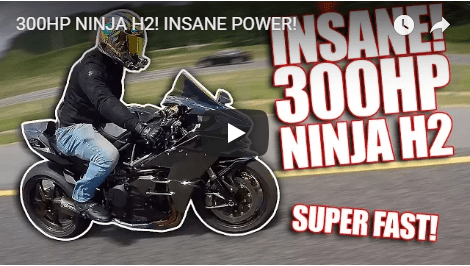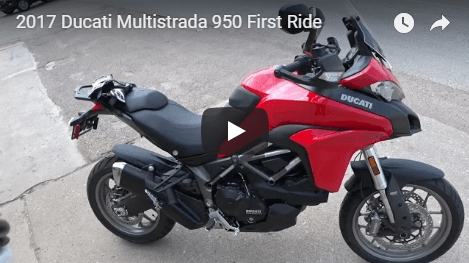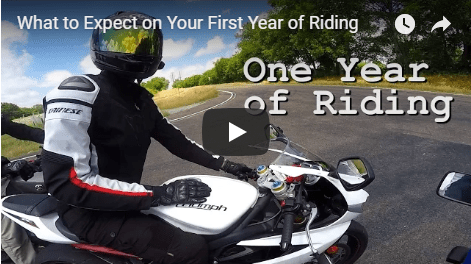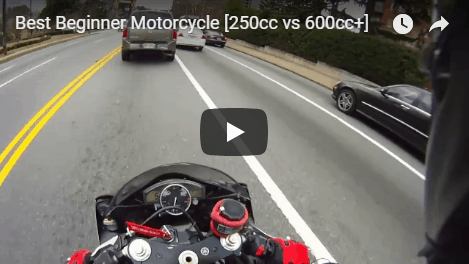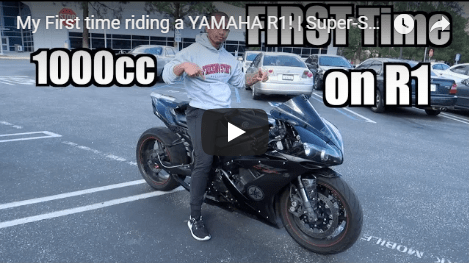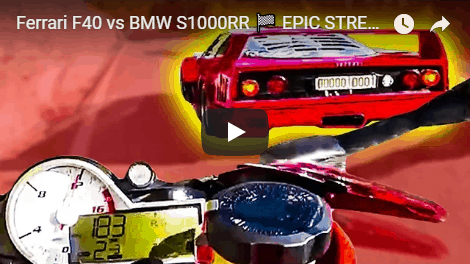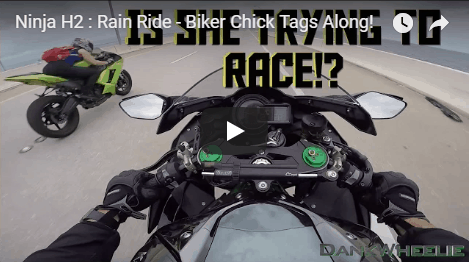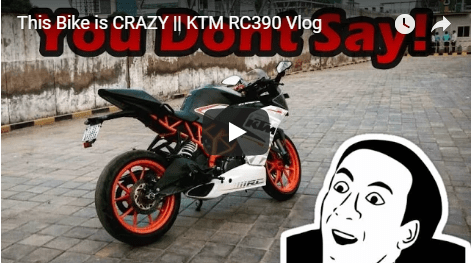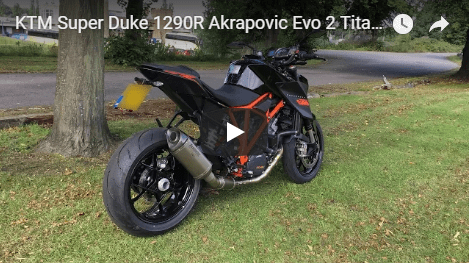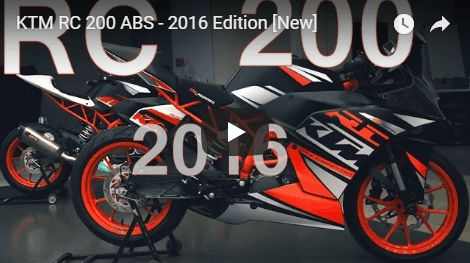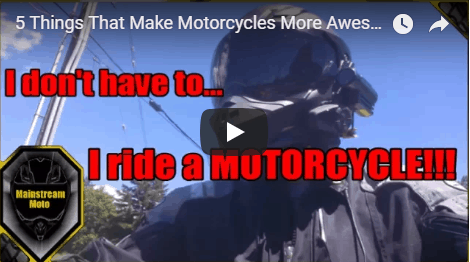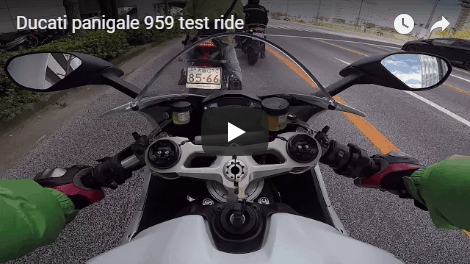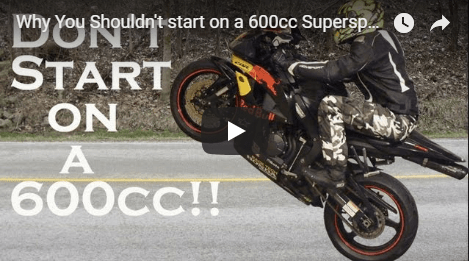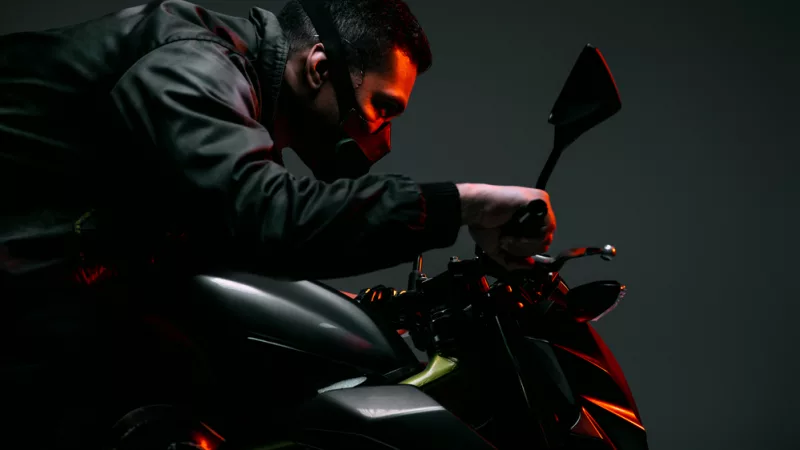What’s better than the open road and a summer breeze on your face? At RumbleOn, we believe that it can only be beat by joining thousands of others who live and breathe for the same experience. This summer, don’t miss your chance to join a community of riders from across the nation by checking out this list of 25 events in 2018. Make lifelong connections, show off your ride, or even buy or sell a bike of your own!
Looking for more ways to adventure? We’ve also compiled the Best Biker Bars and Food Spots, Best Sights to See, and Best Roads to Ride for you.
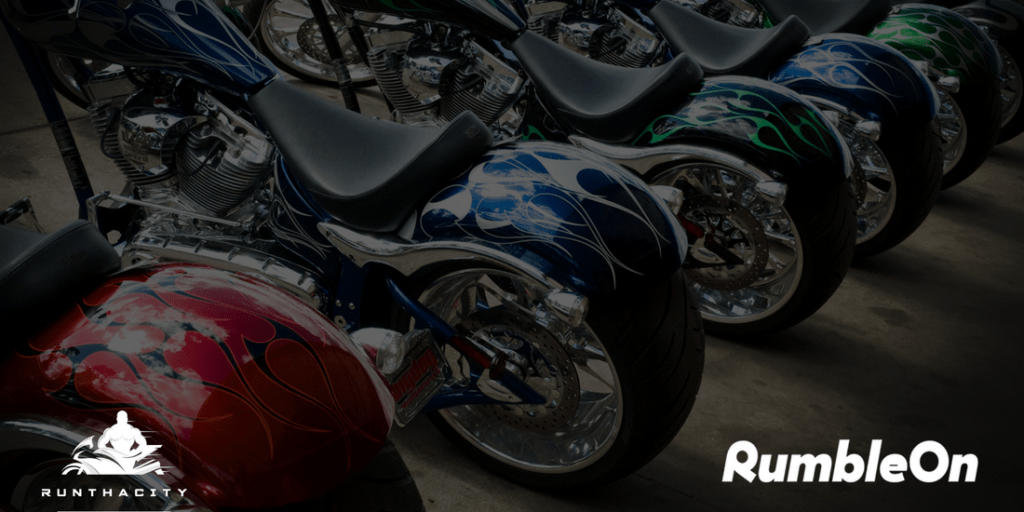
July Events
Monday, July 9, 2018 – Thursday, July 12, 2018
Bowling Green, KY
32nd Annual Women on Wheels International Ride-In™
Tuesday, July 10, 2018 – Thursday, July 12, 2018
Johnson City, TN
Hell’s Canyon Motorcycle Rally
Thursday, July 12, 2018 – Monday, July 16, 2018
Baker City, OR
Monday, July 16, 2018 – Friday, July 20, 2018
Provo, UT
2018 Cascade Country Rendezvous and GS Rally by BestRest
Thursday, July 19, 2018 – Sunday, July 22, 2018
Republic, WA
ABATE of Indiana’s 38th Annual Boogie 2018
Thursday, July 19, 2018 – Sunday, July 22, 2018
Springville, IN
Thursday, July 19, 2018 – Sunday, July 22, 2018
Muskegon, MI
North Dakota Ladies Run – 31st Annual
Friday, July 20, 2018 – Sunday, July 22, 2018
Dickinson, ND
South East Raider Rally – 10th Annual
Sunday, July 22, 2018 – Sunday, July 29, 2018
Maggie Valley, NC
CMA Florida Summer Springs Fling
Friday, July 27, 2018 – Sunday, July 29, 2018
Ft. McCoy, FL
GWRRA Montana District Convention 2018
Thursday, July 26, 2018 – Saturday, July 28, 2018
Missoula, MT
Friday, July 27, 2018 – Sunday, July 29, 2018
Las Vegas, NM

August Events
Thursday, August 2, 2018 – Sunday, August 5, 2018
Black River Falls, WI
Friday, August 3, 2018 – Sunday, August 12, 2018
Sturgis, SD
Apple’s 15th Annual East Coast Motorcycle Rally
Wednesday, August 8, 2018 – Sunday, August 12, 2018
Little Orleans, MD
GWRRA Kentucky Blast District Convention 2018
Thursday, August 16, 2018 – Saturday, August 18, 2018
Cave City, KY
12th Annual Surfside Beach Bash
Friday, August 17, 2018 – Sunday, August 19, 2018
Oyster Creek, TX
Winding Road Ranch Biker Party 2018
Friday, August 24, 2018 – Sunday, August 26, 2018
Rush Springs, OK
Pennsylvania Rally on the River – Summer
Thursday, August 23, 2018 – Sunday, August 26, 2018
Northumberland, PA

September Events
Thunder in the Rockies Motorcycle Rally 2018
Friday, August 31, 2018 – Monday, September 3, 2018
Loveland, CO
Friday, August 31, 2018 – Monday, September 3, 2018
Pioneer, OH
You Might also like
-
Viking Cycle Motorcycle Rain Gear Review
If you’re a biker, you’ve undoubtedly heard of Viking. They’re a leading name in motorcycle gear, making some of the best coats, packs and much more. Did you know they also make the best motorcycle rain gear?
Riding motorcycle in the rain comes with a host of problems, not all of which have to do with road safety. I you live in an area that runs the gamut of climates and weather, and you like to depend on your bike for transportation, you need to be prepared.
When it comes time to buy your motorcycle rain suit, you want the best motorcycle rain gear you can get, and unsurprisingly, that’s going to come from Viking – who else?
What is Motorcycle Rain Gear?
Rain gear for motorcycle riding consists of one or two components – at least a jacket/top, and often, a pair of easily-removed pants. The material used is water-resistant, often nylon or poly-synthetic in nature, capable of sloughing off the built up water, and helping to fight the cold, damp wind you’ll be plowing into at high speed.
Not all rain gear for motorcycle riding is made equally, and Viking, already known for their excellent jackets, pants and packs, have combined art and material sciences to produce the best rain suit for motorcycle riders that money can buy.
Not only will it keep you warm and dry, but it’s remarkably easy to clean – count on mud and dirty tar-laden water splashing on you if you’re interested in riding motorcycle in rain.
Is it Lame to Wear Rain Gear on a Motorcycle?
You like to be respected by your fellow bikers, and there’s nothing wrong with that. If you’re going to ride, you want to ride in style and comfort. This has led some motorcycle riders to leave rain gear for motorcycle riding out of their repertoire in the past.
However, there is nothing lame or uncool about rain gear – the dirty water flying up off the road, and the rain itself, will ruin a leather jacket or a good pair of pants, and the high wind can result in you catching a cold, or even the flu or pneumonia.
Besides, the best motorcycle rain suit designs are quite stylish, matching any rider’s taste in bike and in the rest of their ensemble.
You don’t want to arrive at your destination soaking wet, as wet clothes is one of the most uncomfortable things one can imagine. On a colder, rainier day, you can become very ill if you allow yourself to get wet like this, and the wind will chew right through you as well.
Safety on a motorcycle isn’t just about riding properly and wearing your helmet. It’s about protecting your whole body from the elements, and that includes rain.
OVERVIEW
Viking Cycle Rain Gear offers you the freedom and comfort of movement for every biker’s needs in heavy rainy weather. The color options are bright for stronger visibility, along with reflective striping on the jacket to make sure you get to and from each destination safe and sound. Soft polyester outer shell with PVC packaging; our jacket has a Full-Length Zipper with a Velcro Strom Flap as well. In addition, we’ve added a head shield on the calf for added comfort and safe riding.
Ride through the rain while keeping yourself warm and dry by using these quality rain suits. While using this Viking Cycle Rain Suit you’ll be able to ride during heavy rain while knowing that your leathers under the rain suit will stay nice and dry. This rain suit has built-in reflective fabric on the pants and jacket to give you better night time visibility, keeping you dry and safe while you ride during bad weather.
What is the Best Motorcycle Rain Gear?
Viking’s rain suit for motorcycle riders is a top of the line, two-piece design. The stylish exterior is made of the latest in hydrophobic materials, sloughing off water, even gritty, muddy water from the road. The adjustable sleeves and collar of the jacket make it a one-size-fits-all solution that anyone with anybody build can wear comfortably and with pride.
The pants fasten to the jacket easily, creating a complete seal against the elements. With Velcro, it can easily be adjusted while providing a snug, closed fit that will never jam, rust or corrode.
The advanced material also breathes, with an advanced two-way thermal lining that can keep heat in against the cold, while also allowing breathing so summer rains don’t cook you in your own sweat and heat.
With an attractive gray/black style, it provides a timeless look that’s anything but lame or unfashionable, matching any bike, and any rider, be they young or old. If you’re interested in riding a motorcycle in rain, this is definitely the gear for you. Now you can enjoy those cross-country rides and be prepared for any weather this beautiful country can throw at you, and know you’ll arrive safe, dry, and feeling just fine.
To learn more about Viking’s other awesome biking gear, or about riding a motorcycle in the rain safely, subscribe to my YouTube channel today. I have some awesome things I want to show you, and this is just a taste!
TECHNOLOGY
Viking Cycle’s Rain Gear Fabric is a 100% 600D Polyester coated by PU (polyurethane). The 600D Polyester coated by PU, is also wind and water resistant so it will provide great protection against cold wind and rain and it will not sag and creates less wrinkle overtime. The fabric is light weight but highly resilient against abrasions to provide more resistance between the body and the road for your protection, and also stands against wear and tear for product durability.
-
The Ultimate List Of Motovloggers On YouTube
What Is A Motovlog?
Simply put, motovlogging is when you attach a camera to yourself or your motorcycle and record your ride. Wikipedia defines it as:
A motovlog is a type of video log recorded by a person while riding a motorcycle. The word is a neologism and portmanteau derived from “motorcycle”, “video” and “log”. A rider who creates video blogs known as a moto blogger, and the action of making motovlogs is called motovlogging. Most motovloggers upload their videos on YouTube, and the network of motovloggers here is known as the motovloggers community.
Who Was The First MotoVlogger?
While it’s specifically documented when the first motovlog was created, the earliest motovlogging channels on Youtube is M13 which started in 2006.
Mordeth13
Are you looking for motovloggers to follow?
Since then the motovolgging community has exploded. Each rider has a different style of riding, a different sense of humor, and a different style of teaching.
While I’m positive this isn’t a complete list, I’m sure you’ll find a channel here that will peak your interest. Make sure you check back frequently because I’ll be adding to this list.
If you’re a motovlogger that would like to added to this list simply follow me on YouTube and fill out my contact form and I’ll get you added!
Check Out These Articles:
Shout Out To PhatboyR6 and No.Bumpers for helping me come up with this collection of motovloggers. So here they are in no particular order!
-
Unveiling the Reality of Motorcycle Face Masks: Protection, Comfort, and the Road Ahead
The wind whipping past your face, the rumble of the engine beneath you, the feeling of freedom as you navigate the open road – motorcycles offer an unparalleled experience that exhilarates the soul. However, this sense of liberation comes hand-in-hand with inherent risks. Unlike car drivers enclosed in a metal cage, motorcyclists are directly exposed to the elements and potential hazards on the road.
According to the National Highway Traffic Safety Administration (NHTSA), motorcyclists are 27 times more likely to be killed in a crash than occupants of passenger vehicles. While helmets play a crucial role in mitigating head injuries, facial injuries remain a significant concern for motorcycle riders. This is where motorcycle face masks emerge as a potential solution, sparking questions and sparking interest within the riding community.
Despite their growing popularity, there’s a lack of widespread knowledge and understanding surrounding motorcycle face masks. Are they truly effective in enhancing safety and comfort? What are the different types available, and how do you choose the right one for your needs? This article delves into the unveiling reality of motorcycle face masks, exploring their benefits, drawbacks, and crucial considerations to guide you towards informed decision-making.
Key Takeaways
- Motorcycle face masks offer potential benefits like increased protection from debris, elements, and improved comfort, but they also have drawbacks like reduced airflow and fogging.
- Choose the right mask based on your riding style, needs, and preferences, prioritizing breathability, material, and a snug fit.
- Motorcycle face masks are not a substitute for proper safety gear and responsible riding practices.
Comparison Table: Full-Face vs. Half-Face Motorcycle Face Masks
Feature Full-Face Mask Half-Face Mask Coverage Entire face, head, and often neck Nose and mouth Protection Most comprehensive Limited Breathability Lower Higher Comfort Can be less comfortable, especially in hot weather More comfortable Communication May be challenging Easier Cost Generally more expensive Generally more affordable Types of Motorcycle Face Masks
Types of Motorcycle Face Masks
The world of motorcycle face masks offers a variety of options to cater to different preferences and riding styles. Here’s a breakdown of the two main categories, along with their unique characteristics:
1. Full-Face Masks:
- Comprehensive Protection: Full-face masks, resembling motorcycle helmets with a clear visor, provide the most extensive coverage. They shield the entire face, head, and often the neck, offering superior protection against:
- Impact: In the unfortunate event of an accident, a full-face mask acts as a barrier against road debris, gravel, and potential impacts, minimizing the risk of facial injuries.
- Elements: Full-face masks shield riders from wind, dust, rain, snow, and other harsh weather elements, enhancing comfort and visibility on long journeys.
- Insects: They provide a welcome shield against flying insects, especially beneficial for riders in areas with heavy bug populations.
- Enhanced Visibility (Optional): Certain models come equipped with integrated anti-fog features and a clear, wide visor, ensuring optimal visibility in various weather conditions.
- Drawbacks:
- Limited Airflow: Full-face masks can restrict airflow, leading to potential discomfort and fogging issues, especially in hot weather or during strenuous riding.
- Communication Challenges: Communicating with fellow riders or pedestrians might be hindered, particularly with models that lack integrated communication systems.
2. Half-Face Masks:
- Breathability and Comfort: Unlike their full-face counterparts, half-face masks prioritize breathability and comfort. They come in various designs, including:
- Bandanas: These versatile and affordable options offer basic protection for the nose and mouth, often made from breathable materials like cotton or synthetic blends.
- Balaclavas: These full-head coverings, often made from moisture-wicking fabrics, provide warmth and protection for the face, ears, and neck, particularly suitable for cold weather riding.
- Specialized Masks: Options exist for specific needs, such as dust masks for off-road riding or cold weather masks with windproof and thermal properties.
- Benefits:
- Affordability: Half-face masks are generally more affordable compared to full-face masks.
- Comfort: They offer superior breathability, reducing the risk of overheating and fogging, making them ideal for hot weather conditions.
- Limitations:
- Reduced Protection: Half-face masks offer limited protection compared to full-face options, leaving the eyes, forehead, and cheeks exposed to potential impacts and weather elements.
Choosing the right type of motorcycle face mask boils down to your individual needs and riding style. Consider factors like the level of protection desired, weather conditions in your riding environment, and personal preferences for comfort and breathability.
Benefits of Using Motorcycle Face Masks
While the decision to wear a motorcycle face mask ultimately depends on personal preference and riding style, there are several potential benefits to consider:
Enhanced Safety:
- Reduced Injury Risk: Face masks offer an extra layer of protection against road debris, gravel, and small objects that could potentially cause facial injuries during a fall or collision. While not a substitute for proper riding gear and safe riding practices, they can minimize the potential for cuts, scrapes, and abrasions.
- Improved Visibility: Certain full-face masks with clear visors can actually improve visibility by shielding your eyes from dust, wind, and rain. This can be particularly beneficial during long rides or in weather conditions that might impair vision.
Increased Comfort and Enjoyment:
- Protection from the Elements: On longer journeys, exposure to wind, dust, and harsh weather elements can become uncomfortable. Motorcycle face masks provide a shield against these elements, helping to maintain a more pleasant and comfortable riding experience.
- Reduced Fatigue: Dust and windblown particles can contribute to eye irritation and fatigue, especially over extended periods. Face masks can effectively minimize these issues, allowing you to stay focused and refreshed for a longer ride.
- Sun Protection: While not all masks offer this benefit, some materials provide a degree of UV protection, helping to shield your face from the sun’s harmful rays, especially relevant for riders in sunny regions.
It’s important to remember that motorcycle face masks are not a replacement for safe riding practices and proper safety gear like helmets. However, when used responsibly and in conjunction with other safety measures, they can offer additional benefits and contribute to a more enjoyable and potentially safer riding experience.
Drawbacks and Considerations
While motorcycle face masks offer potential benefits, there are also drawbacks and important considerations to keep in mind before making a purchase:
Drawbacks:
- Reduced Airflow and Fogging: Full-face masks, especially those lacking proper ventilation features, can restrict airflow, leading to discomfort and potentially causing the visor to fog, particularly in hot or humid weather.
- Communication Challenges: Full-face masks can hinder communication with other riders or pedestrians, especially if they lack integrated communication systems or have features that muffle speech.
- Limited Effectiveness in High-Speed Crashes: While offering some protection against debris and minor impacts, it’s crucial to remember that motorcycle face masks are not rigorously tested to the same standards as helmets and might not offer significant protection in high-speed crashes.
Considerations:
- Legality: Regulations regarding motorcycle face masks vary by region. It’s essential to check the local laws in your area to ensure their use is legal before making a purchase.
- Material and Breathability: Choose masks made from breathable materials that prioritize both protection and air circulation to minimize discomfort and fogging.
- Fit and Comfort: A snug but comfortable fit is crucial for proper protection and preventing fogging. Ensure the mask doesn’t restrict your vision or head movement excessively.
- Safety Certifications: Unlike motorcycle helmets that have established safety standards (e.g., DOT, ECE), there are currently no specific safety certifications for motorcycle face masks. Choose reputable brands and prioritize masks made from high-quality materials for greater peace of mind.
By understanding these drawbacks and considerations, you can make an informed decision that aligns with your individual needs and prioritizes safety on the road.
Choosing the Right Motorcycle Face Mask
Navigating the world of motorcycle face masks can feel overwhelming with diverse options available. Here’s a guide to help you select the perfect mask for your riding style:
1. Identify Your Needs and Riding Style:
The first step is to understand your individual needs and the type of riding you primarily engage in. Consider the following:
- Protection Level: Do you prioritize comprehensive protection for frequent highway rides, or is basic coverage sufficient for occasional commutes?
- Weather Conditions: Will you be riding primarily in hot weather, requiring maximum breathability, or do you face frequent cold and require wind protection?
- Comfort Preferences: Do you prioritize a lightweight, barely-there feel, or are you comfortable with a mask offering more substantial coverage?
2. Prioritize Breathability and Material:
Breathability is crucial for comfort and preventing fogging. Choose masks made from:
- Moisture-wicking fabrics: These fabrics like polyester or merino wool effectively manage sweat and prevent discomfort, especially during warm weather riding.
- Mesh materials: Ideal for hot weather, mesh masks offer superior breathability while still providing basic protection against dust and debris.
3. Ensure a Proper Fit:
A snug but comfortable fit is essential for both safety and preventing fogging. The mask should:
- Securely fit around your face without being overly tight or restrictive.
- Not obstruct your vision or head movement in any way.
- Offer a good seal around the edges to prevent dust and wind infiltration.
4. Consider Additional Features:
Depending on your needs, you might find these features beneficial:
- Visor: For full-face masks, choose a clear, anti-fog visor to ensure optimal visibility in various weather conditions.
- Ventilation: Look for masks with strategically placed vents to promote airflow and reduce fogging.
- Removable filters: Some masks offer replaceable filters for additional protection against dust and allergens.
5. Remember, Safety First:
While motorcycle face masks can offer benefits, they are not a substitute for proper safety gear like helmets and protective clothing. Always prioritize safe riding practices and responsible decision-making on the road.
By following these steps and considering your individual needs and preferences, you can choose the best motorcycle face mask to enhance your riding experience while prioritizing your well-being on the road.
6 FAQs About Motorcycle Face Masks
6 FAQs About Motorcycle Face Masks
1. Are motorcycle face masks required by law?
The legal regulations regarding motorcycle face masks vary by region. It’s crucial to check the local laws in your area before using one.
2. What materials are best for motorcycle face masks?
Choose masks made from breathable materials like moisture-wicking fabrics (polyester, merino wool) or mesh for hot weather, prioritizing both protection and airflow.
3. How do I prevent my motorcycle face mask from fogging?
Look for masks with anti-fog visors and proper ventilation. Ensure a snug fit and avoid touching the inside of the visor with your gloves.
4. Can I wear a motorcycle face mask with a helmet?
Yes, most motorcycle face masks are designed to be worn comfortably under a helmet. However, ensure compatibility and a proper fit to avoid discomfort or restricted movement.
5. Where can I buy a motorcycle face mask?
Motorcycle face masks can be found at motorcycle dealerships, online retailers, and outdoor gear stores.
6. Are motorcycle face masks effective against COVID-19?
While some motorcycle face masks might offer basic protection against airborne particles, they are not certified medical equipment and should not be solely relied upon for COVID-19 prevention. Always follow official health guidelines and recommendations.
Facts & Statistics: Motorcycle Usage and Face Mask Preferences
- 70% of motorcycle owners use their bikes for leisure riding. (https://www.statista.com/study/91633/motorcycles-report/)
- 30% of motorcycle owners commute to work on their bikes. (https://www.statista.com/study/91633/motorcycles-report/)
- There are currently no established safety certifications for motorcycle face masks.
Conclusion
The world of motorcycle riding is an exhilarating experience, but it also comes with inherent risks. Motorcycle face masks have emerged as a potential solution, offering additional protection and comfort for riders. However, it’s crucial to approach them with a balanced perspective, acknowledging both their benefits and drawbacks.
This article has provided a comprehensive overview of different types of motorcycle face masks, their potential advantages and limitations, and crucial factors to consider when making a choice. Remember, the ideal mask depends on your individual needs, riding style, and comfort preferences.
Ultimately, safe riding practices and prioritizing safety gear remain paramount. Consider motorcycle face masks as a potential complement to your existing safety measures, not a replacement. By making informed choices and prioritizing your well-being, you can ensure a more enjoyable and potentially safer journey on the open road.





